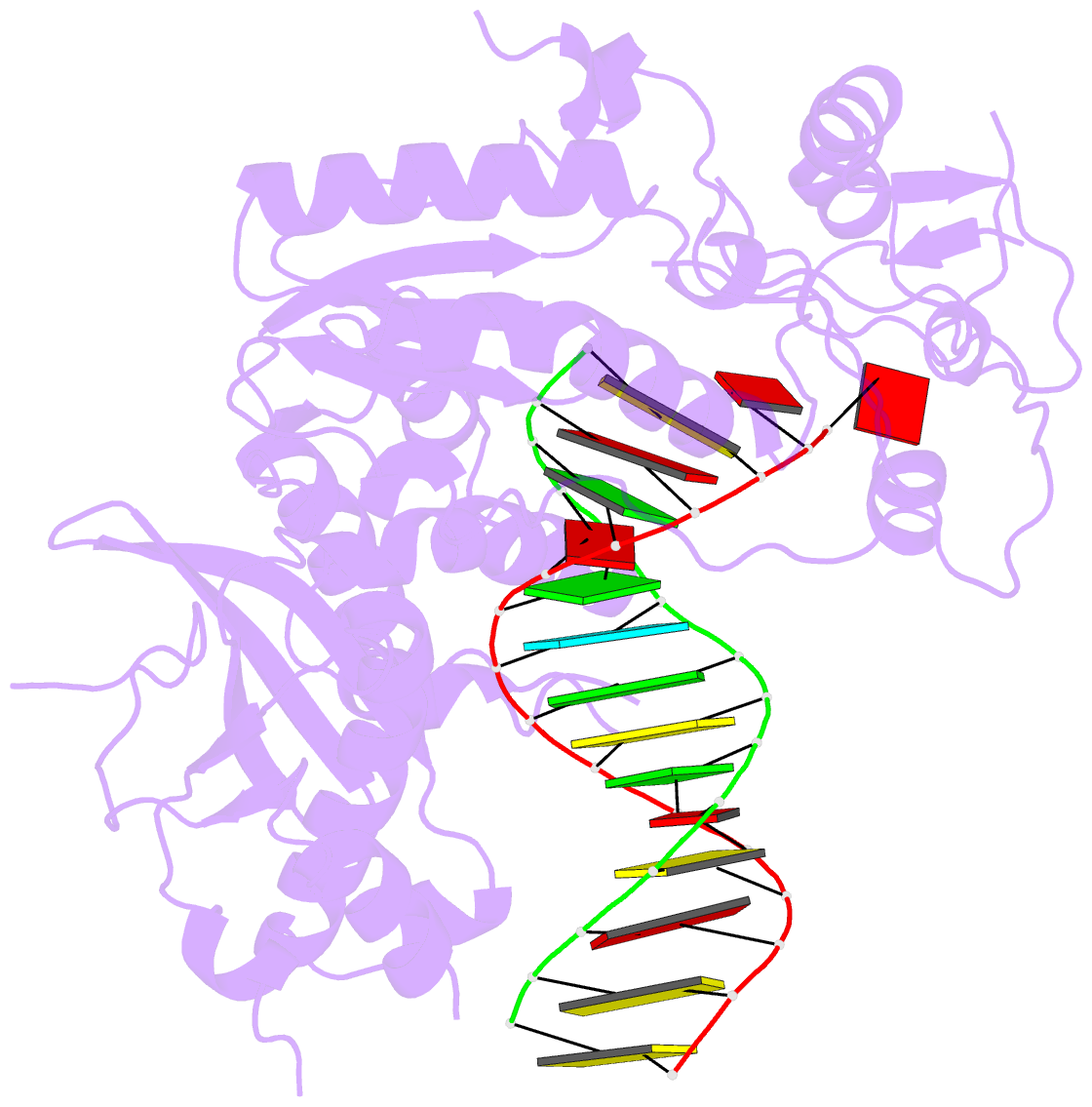Summary information and primary citation
- PDB-id
- 4hkq; SNAP-derived features in text and JSON formats;
DNAproDB
- Class
- transcription-RNA-DNA
- Method
- X-ray (3.04 Å)
- Summary
- Xmrv reverse transcriptase in complex with RNA-DNA hybrid
- Reference
- Nowak E, Potrzebowski W, Konarev PV, Rausch JW, Bona MK, Svergun DI, Bujnicki JM, Le Grice SF, Nowotny M (2013): "Structural analysis of monomeric retroviral reverse transcriptase in complex with an RNA/DNA hybrid." Nucleic Acids Res., 41, 3874-3887. doi: 10.1093/nar/gkt053.
- Abstract
- A key step in proliferation of retroviruses is the conversion of their RNA genome to double-stranded DNA, a process catalysed by multifunctional reverse transcriptases (RTs). Dimeric and monomeric RTs have been described, the latter exemplified by the enzyme of Moloney murine leukaemia virus. However, structural information is lacking that describes the substrate binding mechanism for a monomeric RT. We report here the first crystal structure of a complex between an RNA/DNA hybrid substrate and polymerase-connection fragment of the single-subunit RT from xenotropic murine leukaemia virus-related virus, a close relative of Moloney murine leukaemia virus. A comparison with p66/p51 human immunodeficiency virus-1 RT shows that substrate binding around the polymerase active site is conserved but differs in the thumb and connection subdomains. Small-angle X-ray scattering was used to model full-length xenotropic murine leukaemia virus-related virus RT, demonstrating that its mobile RNase H domain becomes ordered in the presence of a substrate-a key difference between monomeric and dimeric RTs.





